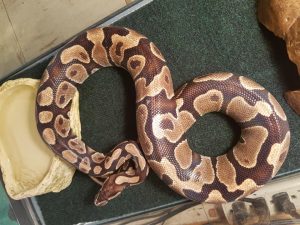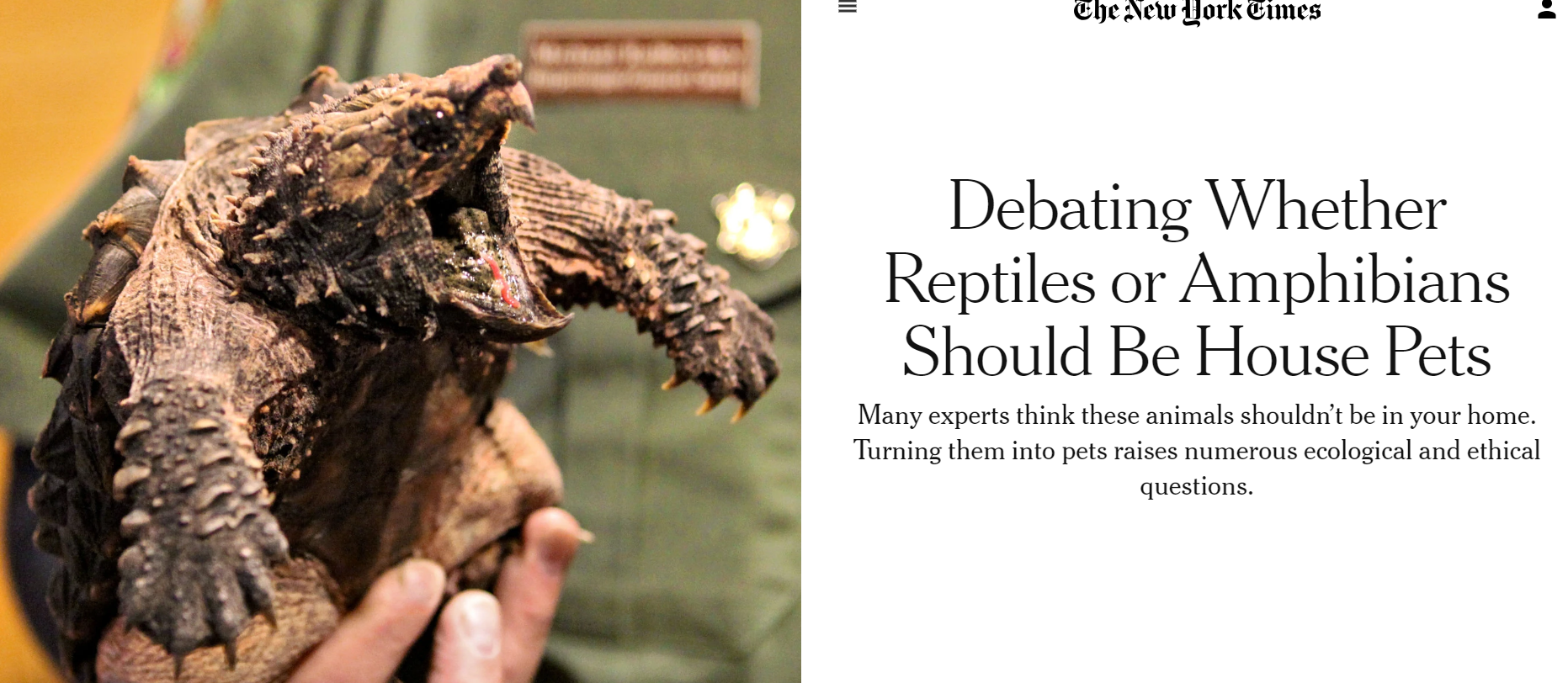In today’s society, many different kinds of exotic animals have become normalized as pets such as reptiles. Native species were initially sold to consumers in the United States as early as the 1940’s (red-eared slider turtle and green anole). A more recent article by the UK’s “The Telegraph” in 2008 even reported that reptiles were now more popular pets than dogs (Copping, 2008). At that time, there was an estimated 8 million reptiles kept as pets in the UK compared to 6.5 million dogs which included the now popular bearded dragon lizard, leopard gecko, and ball python among others (Copping, 2008). In the article, an unnamed source states that reptiles “are far more suitable as pets” than dogs and cats because of how easy it was to take care of them and how little maintenance they require. Scientific literature however, argues that there is much more to the story of the “easy to keep” animals than can be seen on the surface.

Photo credit: Daily Hive Vancouver
Several studies argue that reptiles such as snakes experience higher levels of stress in captivity (Waeyenberge J. V et al., 2018 & Sparkman A. M et al., 2014), as well as being subjected to generally accepted enclosure sizes that have been suggested to be in need of a substantial revision (Warwick C et al., 2019). Snakes that are subjected to poor welfare standards in captivity have also shown to succumb to viral infections and other health problems attributed to lazy husbandry that is a result of the industry pedaling the animals as ‘simple and low maintenance’ (Pees M et al., 2010 & Moorhouse T.P et al., 2016, and Warwick C et al., 2013). Contrary to what some believe, snakes also exhibit behaviours that have been attributed to stress and poor welfare (Warwick C et al., 2013). They are also intelligent and personable and thrive in enriched environments (Burghardt, G. M., 2013). With these points in mind, do snakes really make good pets?

Full Article: https://www.nytimes.com/2017/11/10/science/reptiles-amphibians-pets.html